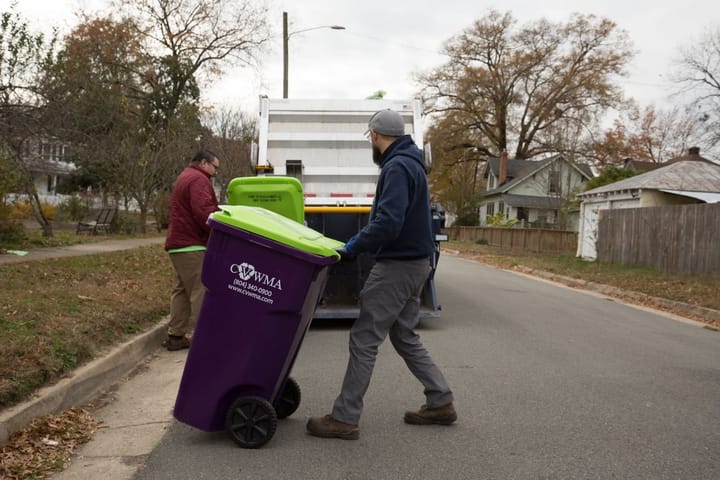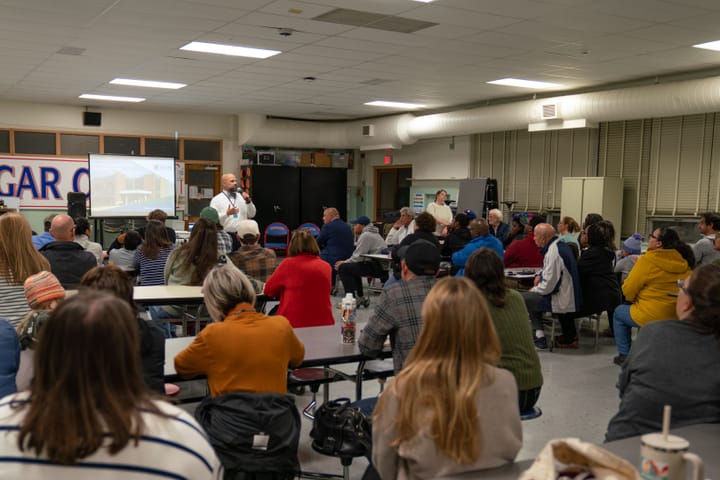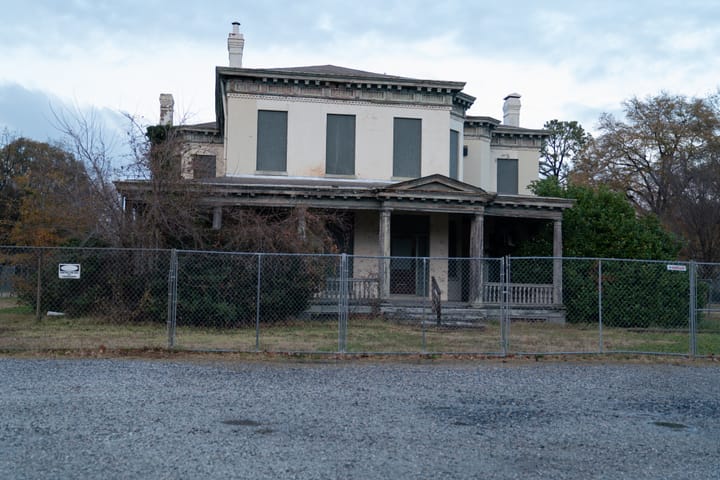Children’s Hospital of Richmond opens region’s first certified pollen tracking site
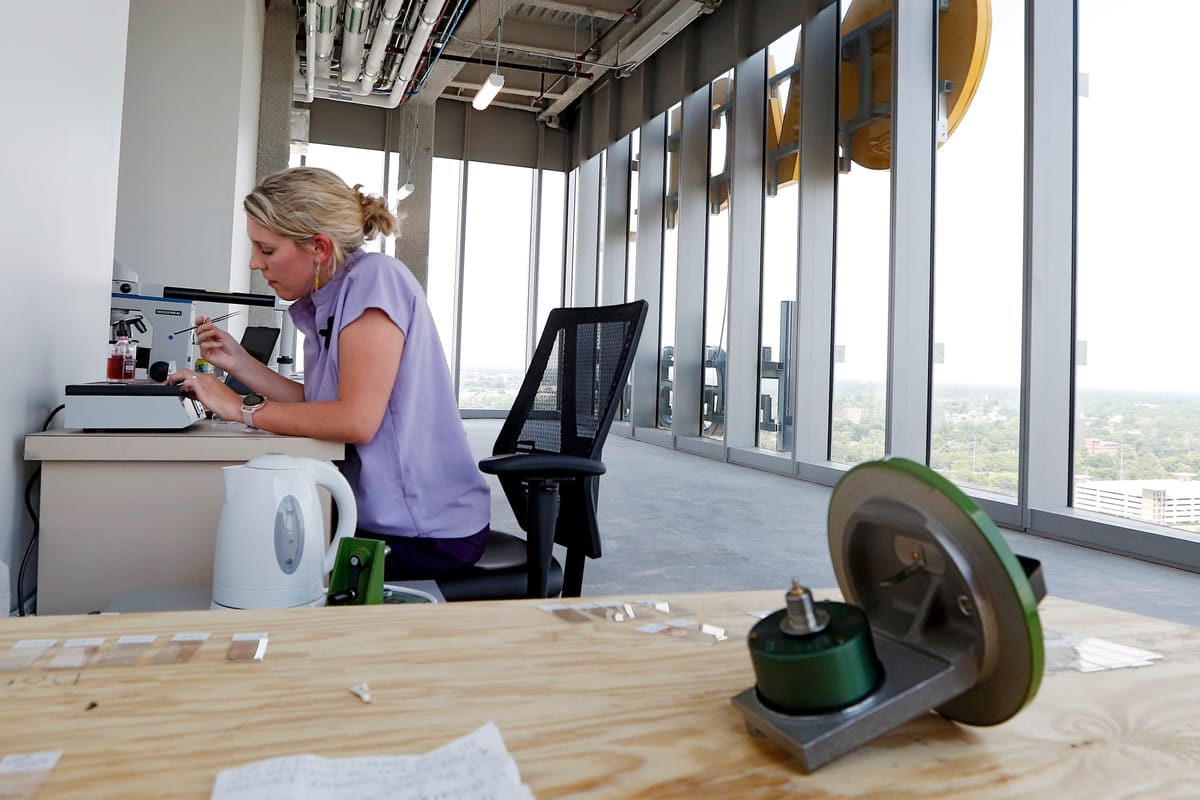
If you want to find out exactly how much pollen is gumming up Richmond’s air, the answer can be found 17 stories above downtown.
There, on the roof of VCU Health’s Adult Outpatient Pavilion — the big glass building that runs the length of a full city block on East Leigh Street — the Children’s Hospital of Richmond at VCU has set up a new pollen counting station. Every Thursday, pediatric nurse practitioner Jessica Hess ascends to the air sampler mounted atop the building, unloads its contents onto slides and examines them under a microscope.
“It’s somewhat therapeutic,” said Hess, CHoR’s official pollen counter. “I’m up there by myself with my pollen, playing some music and just seeing what’s happening.” Frequently, a neighborhood hawk stops by.
The Children’s Hospital pollen counter isn’t the only place where the allergens are tracked in Richmond. Since the 1980s, Allergy Partners of Richmond has operated its own station on the roof of Henrico Doctors’ Hospital.
But the CHoR station is the first in the region to be certified as a National Allergy Bureau site, joining the ranks of roughly 80 stations nationwide where scientists can track and identify allergens and mold using the same methods and following the same training. Currently, Virginia’s only other NAB site is in Melfa on the Eastern Shore, while a Washington, D.C. outpost perches just north of the state line.
“We have this rigorous education in terms of differentiating the pollen, because a lot of stuff can look very similar under the microscope,” said Hess. “With the NAB-certified station, you are getting the most accurate data because we have the training behind it to really accurately identify these things.”
The Richmonder is powered by your donations. For just $9.99 a month, you can join the 1,000+ donors who are keeping quality local journalism alive in Richmond.
While official pollen counts supply allergy sufferers with hard evidence that their misery is real (there’s a certain grim satisfaction in seeing a high score when one’s nose is streaming), there are clinical uses of the data as well.
“Accurately identifying and measuring the pollen grains in our area” ensures that doctors can carry out “the most relevant environmental testing and targeted immunotherapy,” said Dr. Wei Zhao, a professor and chief of allergy and immunology at the Children’s Hospital, in a news release.
Tracking how pollen seasons are shifting due to climate change also can help medical providers time their treatments correctly and anticipate other impacts of exposures, like eczema flare-ups and problems linked to asthma.
“It's much more helpful to start your medications before pollen season starts, because you're getting ahead of the game,” said Hess. “You're treating that inflammation before it even gets here, and your medication will have much better opportunity to work versus if you're already symptomatic.”
While pollen arrives in Richmond in waves, with tree pollen typically appearing in early spring and grass pollen later, scientists have found climate change is stretching out the seasons when it’s abundant and increasing the amount of grains that are suspended in the air during those times. This year, grass pollen appeared the week of April 18, said Hess, despite normally emerging in early May.
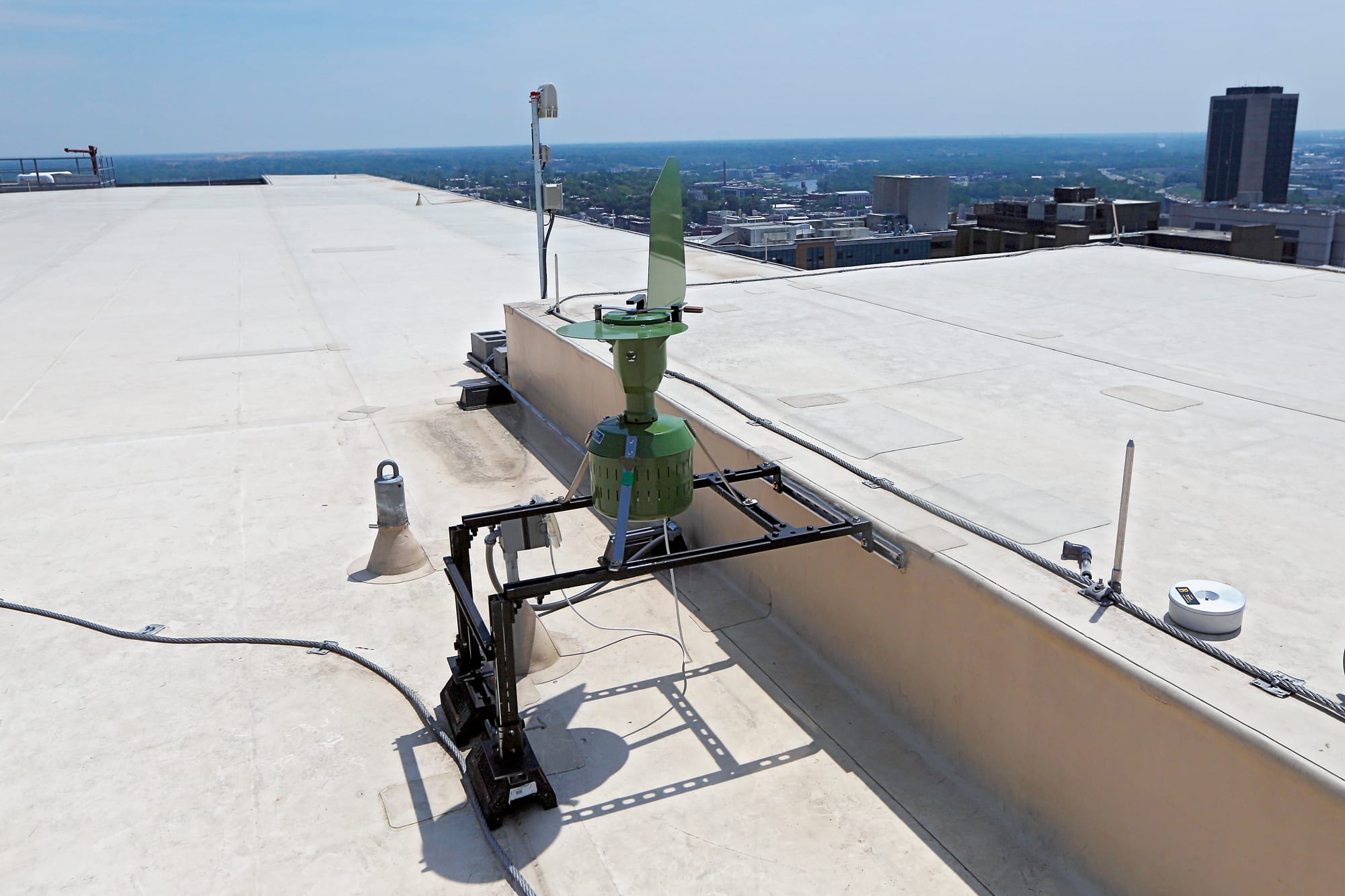
Over the next three years, the Children’s Hospital team plans to track the start, peak and end of the pollen season in Richmond to get a more precise sense of how climate change is impacting this dimension of life in the region.
The pollen counter picks up other particles as well. The National Allergy Bureau recommends stations be elevated well above the ground without many other impediments around to accurately capture grains moving through the air stream and cut down on the amount of debris they pick up.
Still, even 17 floors up, the Richmond station routinely captures bits of tires and other particulate matter, as well as bugs and mold spores.
But pollen is its primary target, and Hess said the Leigh Street site produces “a really good count.” Data, which can be viewed by anyone who sets up an NAB account, is typically posted on Thursdays.
“You can pull up that count, and it’ll break down the top few species in the air,” said Hess.
Her favorite? Pine pollen, which she said looks just like a Mickey Mouse hat.
“I just love how it looks,” she said. “And it’s obviously very easy to identify.”
Contact Reporter Sarah Vogelsong at svogelsong@richmonder.org
(VCU is a sponsor of The Richmonder, but did not influence or review this story.)


